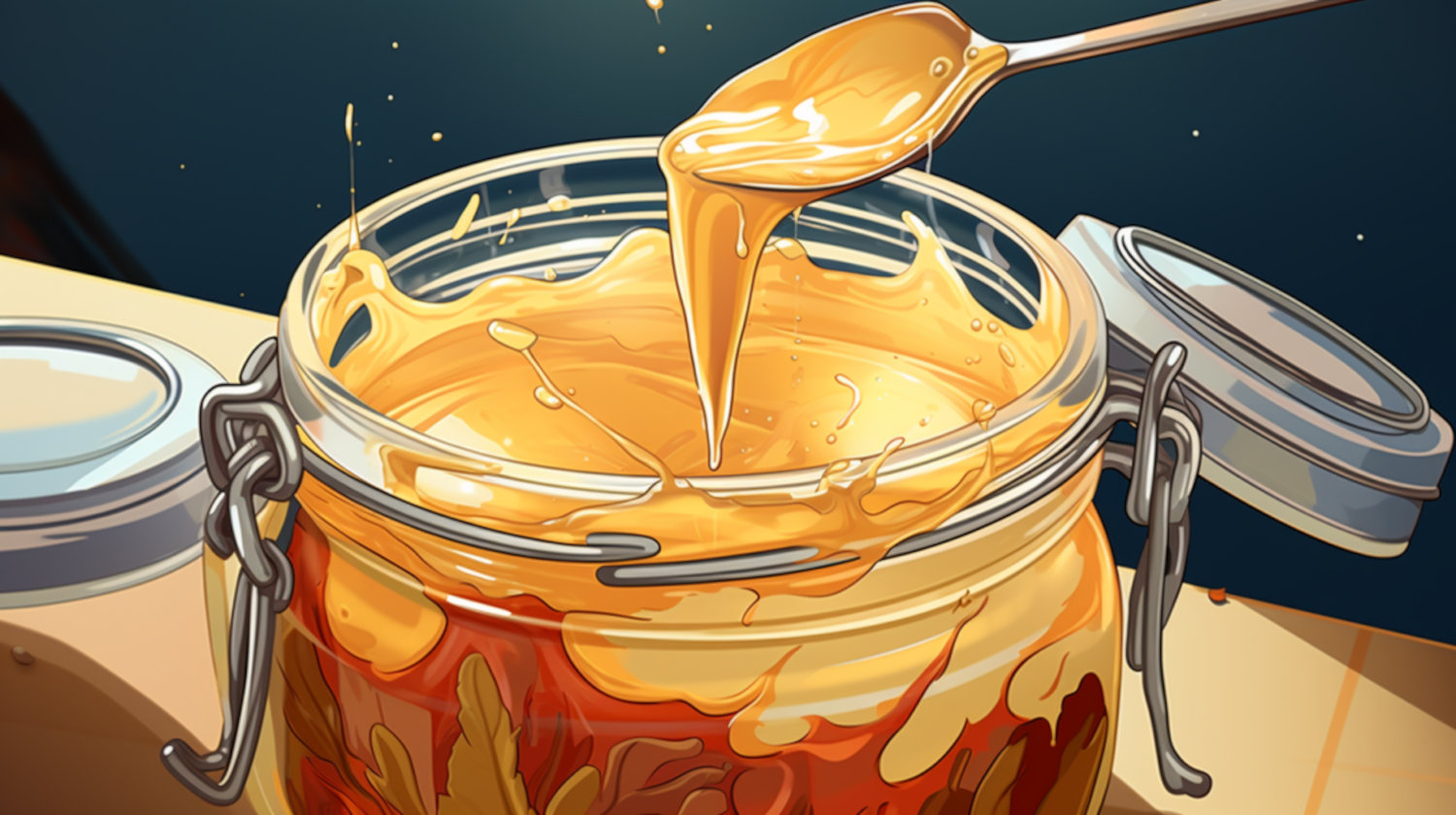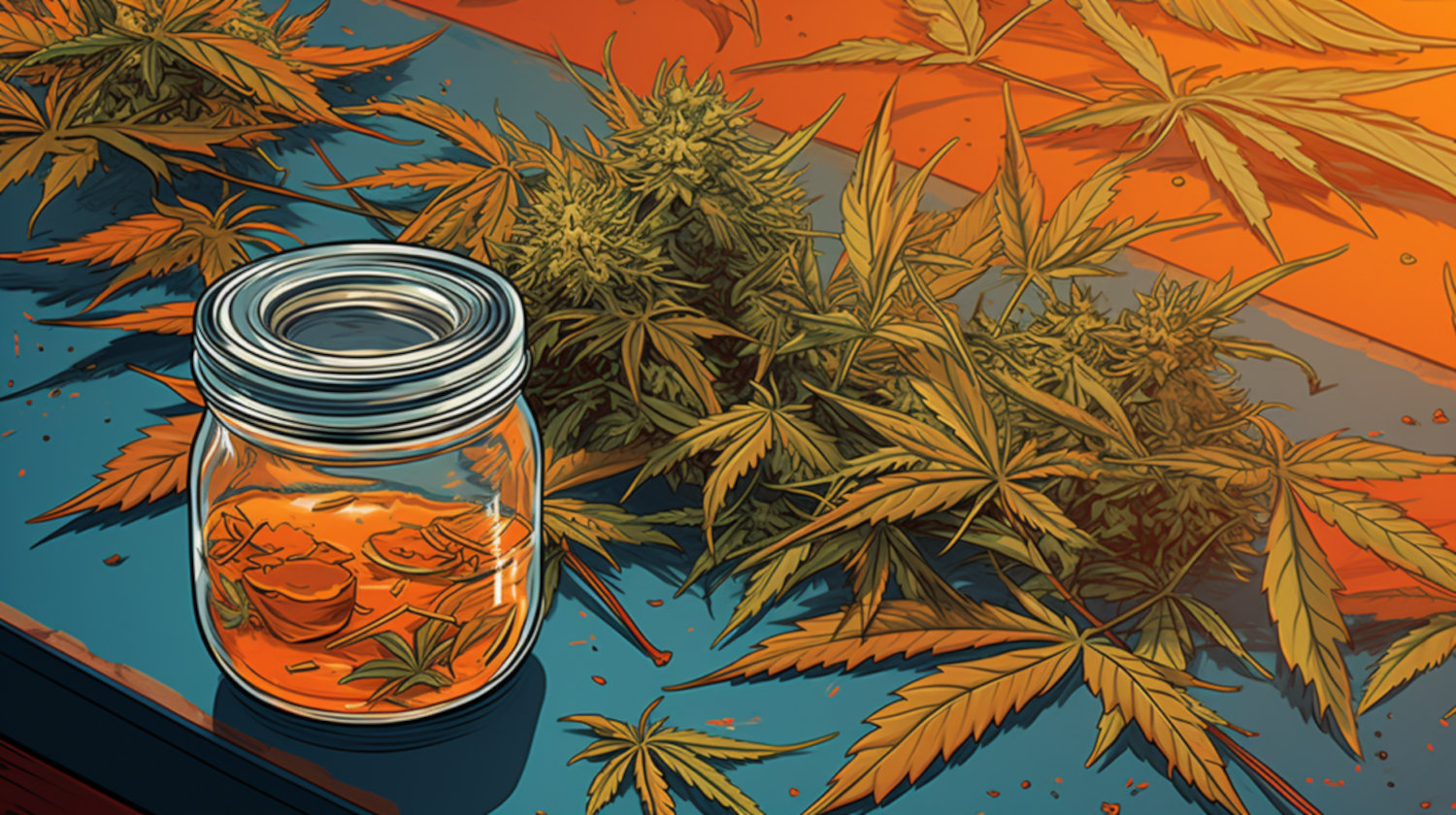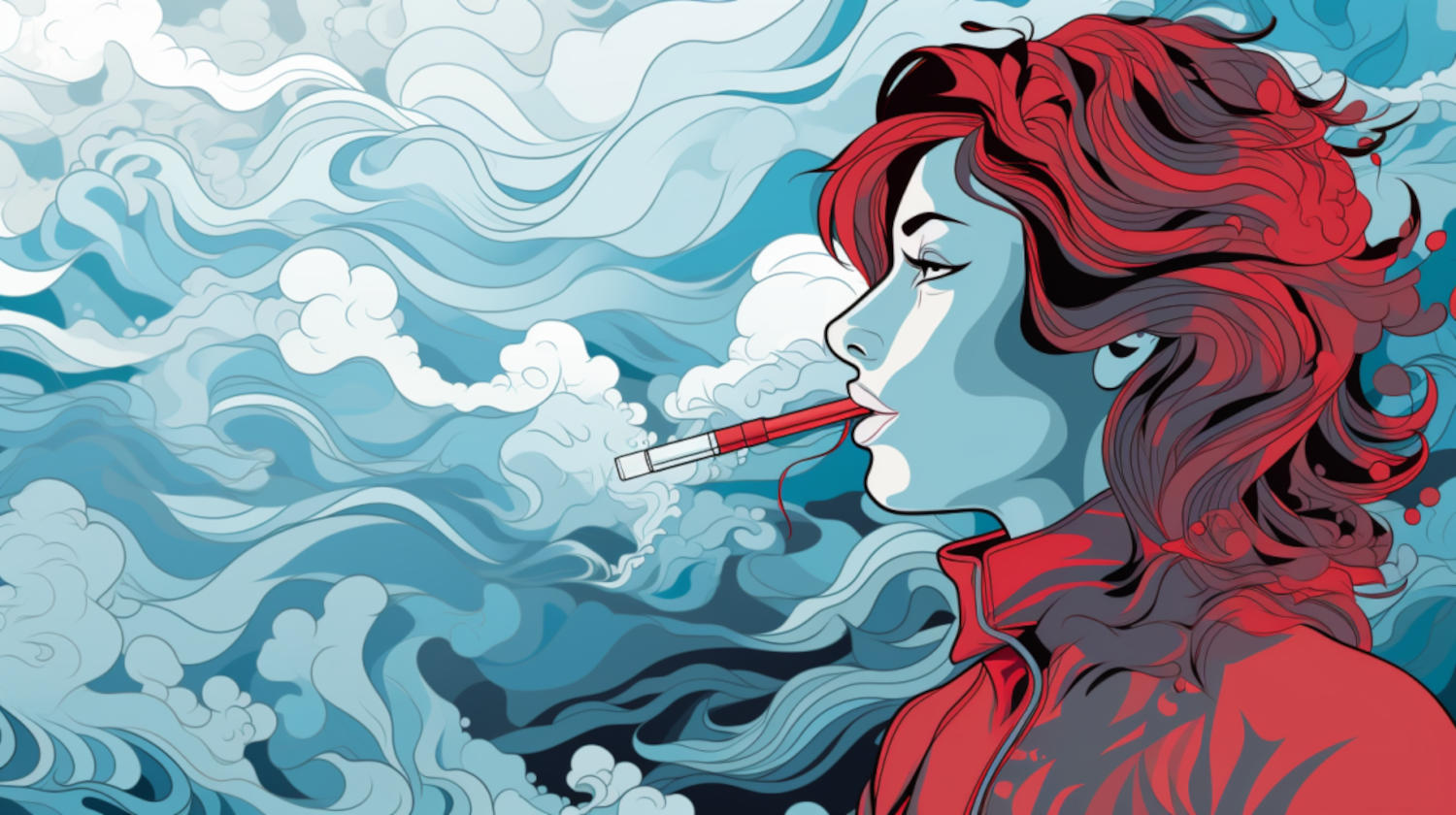In the ever-expanding world of cannabis, the popularity of cannabis extracts has surged. With the rise of extracts, however, has come a bewildering array of names and terminology that can overwhelm even the most seasoned cannabis connoisseurs. Among the countless choices, two names that often cause confusion are "budder" and "badder."
At first glance, it's easy to assume that these two cannabis concentrates are nearly identical in nature, given their similar-sounding names and shared origins. But what sets budder and badder apart?
Demystifying the debate of badder vs budder means, uncovering their distinct characteristics, production methods, and usage while helping you make an informed choice for your cannabis experience.
What is Badder?
Badder concentrate, often referred to simply as "badder," is a popular form of cannabis extract renowned for its exceptional potency and remarkable texture.
Badder's name tells you a lot about its appearance and texture. When you lay eyes on it, you'll notice its consistency is akin to creamy cake batter or thick frosting. It boasts a velvety, luscious quality that makes it stand out from other concentrates. This smooth, pliable texture is a result of its production process, where cannabinoids, terpenes, and other compounds are carefully extracted and purged, yielding a product that's both visually appealing and easy to work with.
The potency of THC badder is one of its most distinguishing features. It's known for its high concentration of THC (tetrahydrocannabinol), the primary intoxicating compound in cannabis. THC levels in badder typically range from 70% to 80% or even higher. This means that a little goes a long way, making badder a preferred choice for users who seek strong, immediate effects.
Badder's elevated THC content not only provides a potent experience but also a rapid onset of effects, making it ideal for those seeking quick relief or intense euphoria. However, this potency also means that badder is best suited for experienced cannabis users who are familiar with their tolerance levels.
What is Budder?

Budder, a cannabis concentrate often referred to as "THC budder," is a popular and potent extract also known for its unique texture and elevated THC content. This concentrate gets its name from its striking resemblance to the creamy consistency of butter, both in appearance and texture. Budder is renowned for its versatility, offering a balanced blend of potency and usability that appeals to a wide range of cannabis enthusiasts.
Budder's name also accurately reflects its appearance and texture. It has a consistency akin to that of whipped or softened butter. This smooth, malleable texture makes it a favorite among users looking for an easy-to-handle concentrate, especially compared to other extracts like shatter. Budder is soft and pliable, allowing for effortless dabbing or mixing with flower in joints or bowls. Its golden, amber, or pale yellow hue adds to its visual appeal, making it a delightful choice for those who appreciate aesthetics.
Like badder, budder concentrate is also celebrated for its high THC concentrations. THC levels in budder typically range from 80% to 90% or more, offering a potent and consistent experience. Like badder, budder is also highly rich in terpenes, which provide plenty of taste and extra effects thanks to the entourage effect.
One of the unique characteristics of budder is its balance between potency and versatility. Its texture allows for a wide range of consumption methods, from dabbing and vaping to mixing with other cannabis products. This adaptability, combined with its potency, makes it a popular choice among both novice and experienced cannabis consumers.
Badder vs Budder: The Complete Breakdown
Here's how these two popular cannabis concentrates stack up against each other. While they share some common features, they also have key differences that can help you distinguish between them.
Similarities
- High THC Content: Both badder and budder are known for their elevated THC content. They typically boast THC levels ranging from 70% to 90% or more, making them potent choices for users seeking intense effects.
- Concentrated Flavor: Badder and budder retain the robust flavor profiles of the cannabis strains from which they are derived. This means you can enjoy a rich, flavorful experience with each dab or inhalation.
- Smooth Texture: Both concentrates exhibit a creamy, velvety texture, which sets them apart from other cannabis extracts. This texture makes them easy to work with, whether you're dabbing, vaping, or mixing them with other cannabis products.
Differences
- Texture: While both badder and budder share a smooth, butter-like texture, badder tends to be slightly softer and more pliable. Budder, on the other hand, often maintains a firmer consistency. The distinction in texture can affect how you handle and use them.
- Appearance: Badder is typically a bit lighter in color, often presenting as a pale yellow or golden hue. Budder can range in color from light amber to deep, rich gold, with some variations in appearance that may be more appealing to different users.
- Versatility: Budder is generally considered more versatile due to its firmer texture, which makes it easier to handle and mix with other cannabis products. Badder's softer consistency may require more care when working with it.
- Aroma and Terpenes: While both concentrates retain the aroma and terpene profiles of their source strains, individual batches may have distinct scent and flavor profiles, allowing users to choose based on personal preferences.
Ultimately, badder and budder are very similar cannabis extracts. In a way, you can think of them as siblings in the greater family of cannabis concentrates. The key differences in texture, appearance, versatility, and aroma enable users to differentiate between them, tailoring their choices to suit their specific preferences and consumption methods. Whether you opt for the soft, smooth allure of badder or the firmer, more adaptable nature of budder, both of these concentrates offer a remarkable and elevated cannabis experience.
How Are Badder and Budder Made?

The creation of badder and budder involves intricate techniques designed to extract and concentrate the beneficial compounds found in cannabis, particularly THC and terpenes. While the end goal for both concentrates is similar, there are nuanced differences in their production processes that lead to variations in texture and appearance.
Both badder and budder are typically made using solvent-based extraction methods, with butane and propane being popular choices. These solvents are used to dissolve the desirable compounds in the cannabis plant, including THC and terpenes. After extraction, the solvent is purged through a carefully controlled process to ensure safety and purity by removing residual solvents and other unwanted compounds.
The badder production process emphasizes whipping or agitation. After the initial extraction, the concentrate undergoes a whipping process, often with the aid of heat. This agitation leads to a softer, more pliable texture, resembling the familiar appearance of cake batter.
Budder production follows a similar extraction process but typically involves fewer agitation steps. The result is a firmer, more moldable texture reminiscent of softened butter. The differences in texture can be attributed to variations in temperature, pressure, and timing during post-extraction processes.
So, ultimately, the primary distinction in the production of badder and budder is the level of agitation and the consistency of the end product. Badder undergoes more vigorous whipping, leading to a softer, creamier texture, while budder involves less agitation, resulting in a firmer and more moldable concentrate.
Of course, it's also worth pointing out that the exact production methods can vary among manufacturers and extraction artists, leading to subtle differences in the final products' characteristics. The choice of cannabis strains and the terpene profiles also contribute to the distinct flavors and aromas that each concentrate offers.
What About Live Resin?
Live resin is a unique extract known for its distinct flavor and aromatic qualities. But how does it compare to badder and budder, and can it be used to create these popular concentrates?
Live resin is a cannabis concentrate made from freshly harvested cannabis plants that have been flash-frozen immediately after harvest. This freezing process preserves the delicate terpenes and cannabinoids in their natural state, resulting in a concentrate with an exceptionally rich and authentic flavor profile. You can think of it, then, as the opposite of THC distillate, which is a cannabis concentrate containing almost nothing but pure THC. Live resin is often revered for its vibrant terpene content and potent effects.
Live resin can indeed be used as the starting material for making both budder and badder. You'll often see such products being marketed as "live resin badder," "live badder," "live resin budder," or "live budder."
Whether live resin is "better" than badder or budder depends on individual preferences and the experience you seek. Live resin is cherished for its exceptionally vibrant and fresh terpene profiles, which deliver an authentic representation of the cannabis strain's aroma and flavor. If you prioritize an intense and true-to-strain taste experience, live resin might be your preferred choice.
On the other hand, regular “cured” budder and badder offer unique textures and consistencies. Budder has a smooth, butter-like quality, while badder is known for its cake batter resemblance. These textures make them particularly easy to handle and work with for various consumption methods.
Ultimately, the choice between live resin, badder, or budder comes down to your preferences for flavor, texture, and the type of cannabis experience you desire. Some users may prefer the rich terpene profile of live resin, while others may gravitate toward the smooth textures and versatility of badder and budder. Each of these concentrates has its own appeal, contributing to the diverse world of cannabis extracts.
How to Use Badder and Budder

Badder and budder can be consumed through a range of methods, each offering a unique experience. Here are the most common ways to enjoy these cannabis concentrates:
- Dabbing: Dabbing is a popular method for consuming badder and budder. It involves heating a specialized nail or banger with a torch and then applying a small amount of the concentrate onto the hot surface. The vapor produced is inhaled through a water pipe or dab rig. Dabbing is favored for its quick onset of effects and the ability to savor the full flavor and potency of the concentrate.
- Vaporization: Using a vaporizer, such as a wax pen or dab pen, is a convenient and discrete way to enjoy badder and budder. These devices heat the concentrate to the point of vaporization, releasing the cannabinoids and terpenes without combustion.1 Vaporization preserves the flavor and potency of the concentrate while being less harsh on the lungs.
- Mixing with Flower: Some users prefer to mix badder or budder with cannabis flower when rolling joints or packing bowls. This "twaxing" method combines the benefits of both flower and concentrates, offering an enhanced experience.
- Edibles: Badder and budder can be used to infuse homemade edibles or incorporated into cooking and baking recipes. However, when using concentrates in edibles, it's important to measure and follow recipes carefully to avoid overconsumption.
Dabbing is often considered the most popular method for using badder and budder. It provides a direct and potent experience, allowing users to appreciate the flavors and effects of the concentrate fully. Dabbing rigs, whether electronic or traditional, are widely available, making them accessible to enthusiasts with varying preferences.
For beginners, using a vaporizer, such as a wax pen or dab pen, is often the most straightforward and most user-friendly method to enjoy badder and budder. These devices are designed for simplicity and offer precise control over the dosage. They also eliminate the need for torches and elaborate setups, providing a safer and less intimidating way to explore concentrates.
Before trying any method, you should always understand the dosage and start with a small amount, especially if you’re new to concentrates.
References
- Meehan-Atrash J, Rahman I. Cannabis Vaping: Existing and Emerging Modalities, Chemistry, and Pulmonary Toxicology. Chem Res Toxicol. 2021;34(10):2169-2179. doi:10.1021/acs.chemrestox.1c00290 ↩︎
The information in this article and any included images or charts are for educational purposes only. This information is neither a substitute for, nor does it replace, professional legal advice or medical advice, diagnosis, or treatment. If you have any concerns or questions about laws, regulations, or your health, you should always consult with an attorney, physician or other licensed professional.




